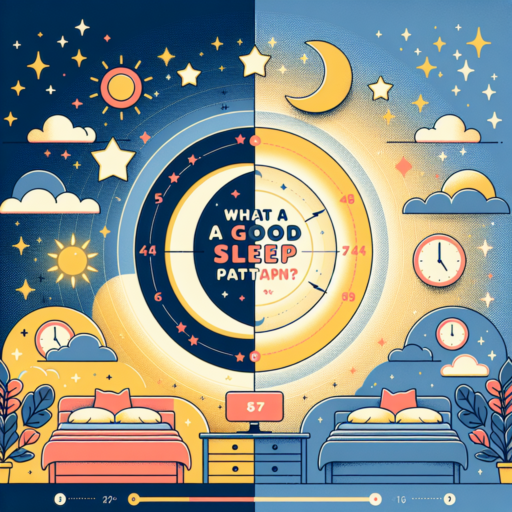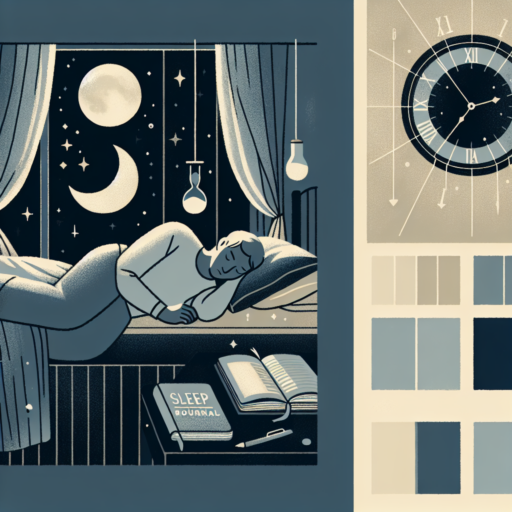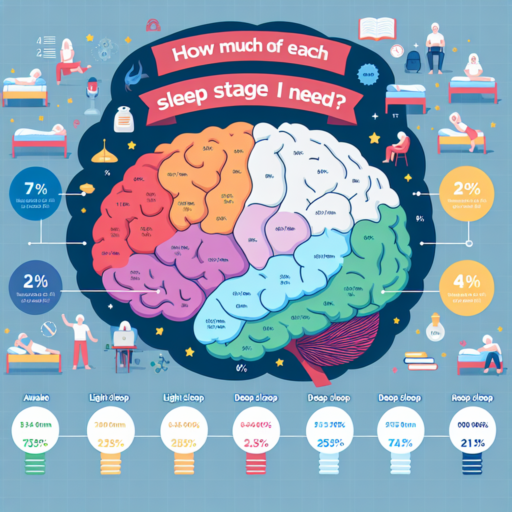What is an ideal sleep pattern?
An ideal sleep pattern adheres to consistency and adequacy, ensuring that an individual receives both the quantity and the quality of sleep required for optimal functioning during waking hours. It’s not just about the number of hours slept, but also about the timing, regularity, and sleep stages experienced throughout the night. Understanding the architecture of sleep can significantly improve one’s approach to achieving an ideal pattern.
Keys to a Healthy Sleep Pattern
- Aiming for 7 to 9 hours of sleep per night for adults, as recommended by the National Sleep Foundation.
- Maintaining a regular sleep schedule, going to bed and waking up at the same time every day, even on weekends.
- Incorporating a relaxing bedtime routine to signal your body it’s time to wind down.
- Ensuring the sleep environment is conducive to rest, with a comfortable mattress and pillows, minimal light and noise, and a cool temperature.
Moreover, the progression through different stages of sleep, including both rapid eye movement (REM) and non-REM phases, is crucial for an ideal sleep pattern. Each cycle lasts about 90 minutes, and experiencing four to six cycles per night is typically necessary for a restorative sleep experience.
Adherence to these elements contributes to establishing a sleep pattern that can profoundly impact overall health, mood, and cognitive function. A disciplined approach towards maintaining this equilibrium is vital, as is addressing any sleep disorders or disturbances that might impair sleep quality or duration.
No se han encontrado productos.
Which is better, REM or deep sleep?
Discussing whether REM (Rapid Eye Movement) or deep sleep is «better» can be somewhat misleading, as both stages play crucial roles in our sleep cycles and overall health. REM sleep, often associated with dreaming, plays a significant role in emotional regulation and memory consolidation. On the other hand, deep sleep, or slow-wave sleep, is critical for physical recovery, growth, and immune function. Understanding the distinct benefits of each can shed light on why they are both indispensable components of a good night’s rest.
The Role of REM Sleep
- Memory Consolidation: REM sleep aids in the consolidation of memories, transforming them from short-term to long-term storage.
- Emotional Processing: This phase helps in processing and regulating emotions, contributing to emotional and psychological well-being.
Deep Sleep Advantages
- Physical Recovery: Deep sleep is paramount for physical health, promoting cell regeneration and energy restoration.
- Immune System Boost: It strengthens the immune system, helping the body to fight off illness more effectively.
In considering the question of whether REM or deep sleep is better, it’s important to recognize that they serve different but equally vital functions. While REM sleep may be more about the mind and psychological aspects, deep sleep focuses on physical health and recovery. Balancing both stages is key to achieving comprehensive health benefits from sleep.
What is a good sleep pattern on an Apple Watch?
Understanding a good sleep pattern on an Apple Watch involves unraveling how this modern tool intersects with traditional sleep science. The Apple Watch, through its extensive health and fitness tracking capabilities, can provide insightful data regarding one’s sleep habits. A good sleep pattern is generally characterized by consistent sleep and wake times, sufficient amounts of deep and REM sleep, and minimal sleep disruptions.
To optimize your sleep quality, aiming for 7 to 9 hours of sleep per night is recommended for most adults. The Apple Watch can track the duration of your sleep, and its sensors monitor the stages of sleep you undergo, including light, deep, and REM sleep. Achieving a balanced mix of these stages throughout the night is crucial for physical recovery and cognitive functions. Deep sleep aids in physical recuperation, while REM sleep supports memory consolidation and mood regulation.
Utilizing Apple Watch for Monitoring Sleep Patterns
- Regularly check the Sleep app to understand your sleep trends over time.
- Use the bedtime and wake-up time feature to establish consistent sleep routines.
- Monitor the amount of deep and REM sleep to ensure you’re getting restorative rest.
How many hours of REM sleep do you need?
Understanding the amount of REM (Rapid Eye Movement) sleep you need is crucial for maintaining your overall health and well-being. REM sleep, often described as the dream phase of sleep, plays an essential role in cognitive functions such as memory, learning, and emotional processing. While individual needs may vary, experts generally recommend that adults aim for a certain percentage of their total sleep time to be in the REM stage.
For most adults, REM sleep should constitute approximately 20-25% of their total sleep cycle. Given that the average adult sleep requirement is around 7 to 9 hours per night, this translates to about 1.5 to 2 hours of REM sleep nightly. However, it’s important to note that this requirement may fluctuate based on various factors including age, physical activity levels, and general health conditions.
Factors Influencing REM Sleep Needs
- Age: Newborns and infants spend a significant portion of their sleep in the REM stage, which can be as much as 50% of their total sleep time. This percentage decreases as one ages.
- Stress and Lifestyle: High levels of stress and certain lifestyle choices can significantly impact the amount of REM sleep you achieve, reducing its overall quality and duration.
- Health Conditions: Certain medical conditions and medications can also affect the REM stage of sleep, either by shortening its duration or disrupting its pattern.
While aiming for the optimal amount of REM sleep is beneficial, it’s equally important to focus on the quality of sleep. Ensuring a comfortable sleeping environment, adhering to a consistent sleep schedule, and minimizing sleep disturbances can help maximize the benefits of REM sleep. For individuals concerned about their sleep patterns, consulting with a healthcare professional may provide valuable insights and recommendations.




